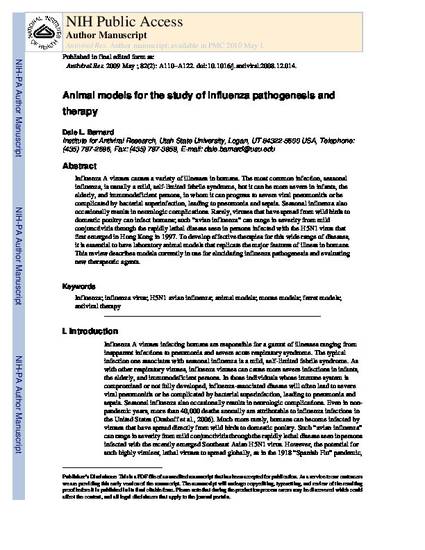
Influenza A viruses causes a variety of illnesses in humans. The most common infection, seasonal influenza, is usually a mild, self-limited febrile syndrome, but it can be more severe in infants, the elderly, and immunodeficient persons, in whom it can progress to severe viral pneumonitis or be complicated by bacterial superinfection, leading to pneumonia and sepsis. Seasonal influenza also occasionally results in neurologic complications. Rarely, viruses that have spread from wild birds to domestic poultry can infect humans; such “avian influenza” can range in severity from mild conjunctivitis through the rapidly lethal disease seen in persons infected with the H5N1 virus that first emerged in Hong Kong in 1997. To develop effective therapies for this wide range of diseases, it is essential to have laboratory animal models that replicate the major features of illness in humans. This review describes models currently in use for elucidating influenza pathogenesis and evaluating new therapeutic agents.

This article was originally published by Elsevier in Antiviral Research.